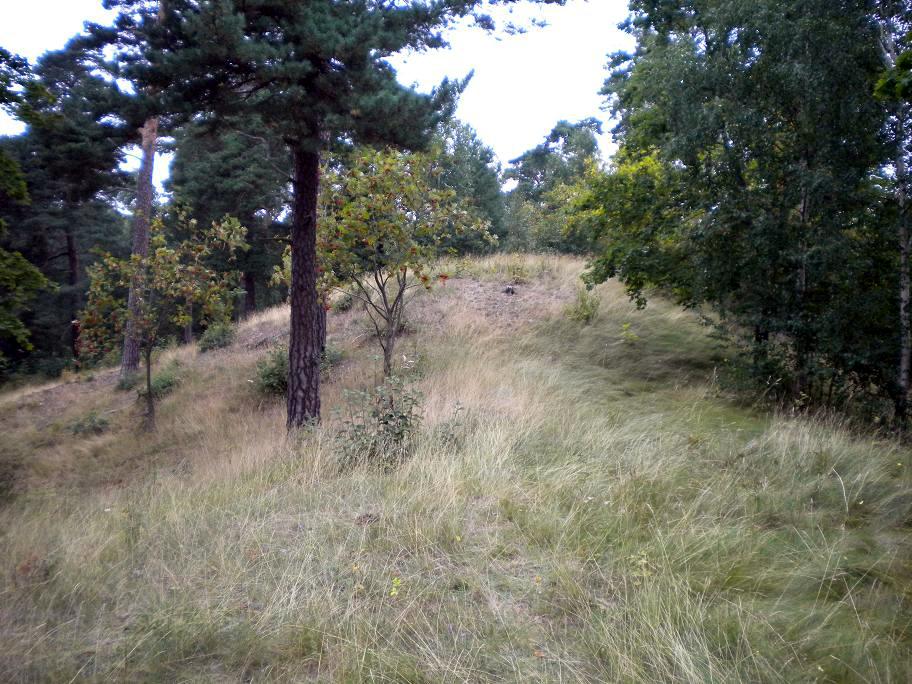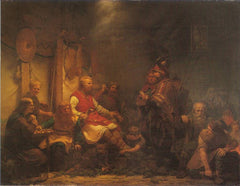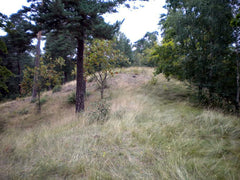on all orders over $100
on all orders over $100

Björn Ironside was a famous viking king who ruled over Sweden and was supposedly the son of Ragnar Lothbrok. In contrast to how he was depicted in the popular TV show Bjorn was actually the son of Ragnar and Aslaug, not Lagertha, and was not the eldest.
It is generally accepted by historians that Bjorn was a real historical figure and he was thought to have been alive during the 9th Century AD. He was the first ruler of the Munsö dynasty of Sweden, which his sons inherited after him until 1060 AD. There is a burial mound on the Island of Munsö which was said to be the final resting place of Bjorn.
After Ragnar's first wife tragically died from an unknown disease he was distraught and decided to travel to Norway where he would eventually meet Aslaug. As a king of lands in Sweden and Denmark Ragnar had promised to be married to the daughter of another Swedish king, however when he met Aslaug he was so taken with her beauty and intellect that he decided to cancel his marriage with the princess.

Ragnar and Aslaug - August Malmstrom
In his second marriage Ragnar therefore decided to be married to Aslaug, with whom he had four children. Bjorn was the second eldest of these with Ivar being his older brother and Sigurd and Hvitserk being his younger brothers. He also had half brothers from Ragnar's other marriages, such as Eirik and Agnar.
Bjorn fathered two sons himself, named Refil Björnsson and Erik Björnsson who inherited his lands and became kings of Sweden after his death. According to another saga 'the saga of Erik the Red' Bjorn had another son named Asleik, however this was not mentioned in most of the other sources.
There are numerous historical sources which describe the exploits of Bjorn's life, however as was often the case with Norse history many of them were written decades or even centuries after Bjorn's death. In Bjorn's case there were actually some primary sources which give more weight to their historical accuracy than the later sagas.
Some of the oldest written sources, dating back to 1070 AD come from the Frankish kingdoms and describe Bjorn's battles with the Frankish King Charles the bald. Bjorn travelled from his home in Scandinavia and invaded with the help of another viking chieftain known as Sigtrygg.
King Charles managed to narrowly defeat the Viking invasion force in battle at Champagne, and Sigtrygg decided to return home with his men. Bjorn however was less e easily deterred and after receiving reinforcements and regrouping he continued his war against the Frankish, eventually managing to sack the city of Paris in 856 AD.
The 'tale of Ragnar's sons' and the earlier 'saga of Ragnar Lothbrok' both tell of Bjorn's life and his conquests alone with his paths and brothers. The story begins with him conquering the nearby kingdoms of Zealand, Gotland, and Öland to add to his fathers dominion whilst Ragnar was still alive. In a dispute with another Swedish king named Eysteinn, Bjorn and his brother Hvitserk were lead into battle by their mother, Aslaug, where they managed to win. a great victory and kill the enemy king.

Bjorn and Ivar hear of their father's death - August Malmstrom
In this saga there was also a large amount of detail given about the exploits of Ragnar's sons and their vengeance upon king Aella after his death. Bjorn helped to lead the great heathen army, along with his brothers, which was the first time a Viking invasion force had entered the British Isles with the express intent of conquering and occupying large parts of the territory.
During their conquest they managed to take the city of York, the most important stronghold in the kingdom of Northumbria, and defeat Kind Aella in battle. After taking him hostage Bjorn and his brother subjected the king to the brutal 'blood eagle' execution in order to avenge the death of their father.
After his invasion of the British Isles Bjorn continued to wreak havoc across medieval Europe, invading Normandy in France, and even as far south as Lombardy in Italy. These raids around the Mediterranean were documented in numerous sources from outside of Scandinavia including Arabs and Franks. The raids occurred around the year 860 AD and were lead by Bjorn Ironside and Hastein, another prominent Viking chieftain.
Once they had finished raiding northern France Bjorn and his men sailed around the southern tip of the Iberian peninsula and managed to fight their way through the straits of Gibraltar and into the Mediterranean where they conducted numerous raid on southern France. The group had a number of setbacks, including losing as many as 40 ships due to bad weather conditions which forced them to spend the winter on shore.
According to one account they eventually arrived at the shores of Italy and attempted to travel inland encountering the town of Luni, which they had thought to be Rome. Unable to breach the walls of the city, Bjorn devised a cunning plan to get their men inside. He sent messengers to the Christian king, saying that he was on his deathbed and would soon die from a terrible sickness, and asked to receive Christian sacraments and be buried within the churches grounds.
Once the men had carried him into the church he leapt from the stretcher and fought his way through enemies on his way to the gates in order to open them and allow the rest of his men to enter and sack the city. Upon learning that the city was not in fact Rome, the Vikings pondered as to whether they should attack their original target, however word had spread of their attack and once they realised that the Romans would be well prepared for a siege the norsemen decided to sail home.
Since these sources came so much time after the events supposedly took place it is unclear as to whether or not they actually happened in the same fashion as in the sagas. Many of the heroic details were likely added afterwards, however sailing from Scandinavia to Southern Europe and the Mediterranean to raid during the Viking age was an impressive feat in its own right.
It wasn't mentioned in the tale of Ragnar's sons how Bjorn died and therefore it has lead historians to believe that he likely died of old age rather than being killed in battle. In the saga he was granted lands in Sweden, around Uppsala, and became the first king of Munsö, where it is presumed that he ruled for the rest of his days.

Bjorn's Alleged burial site in Munsö, Sweden.
There is a mound in Munsö which is crowned by a stone with various runic engravings, which was thought to have belonged to Bjorn and possible be his burial site.
Leave a comment